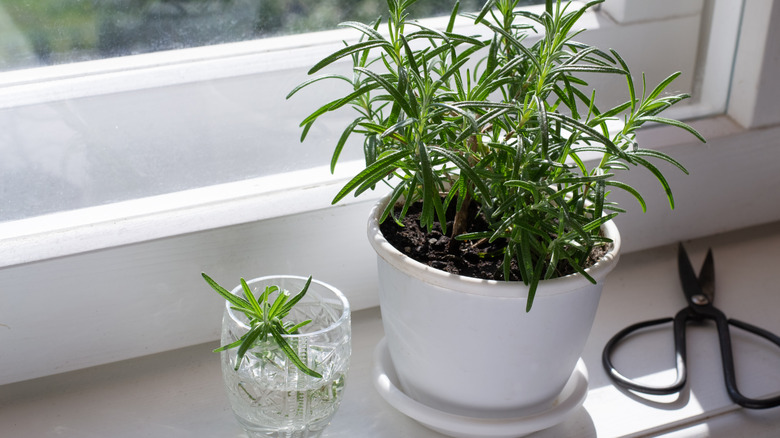How To Prepare Your Rosemary Plants For Winter So They Come Back Thriving Next Season
We may receive a commission on purchases made from links.
Growing your own rosemary plant (Salvia rosmarinus) is both practical and rewarding, giving you a ready supply of fresh herbs to flavor dishes like roasted potatoes, chicken, and vegetables. With its aromatic scent, dainty clusters of light blue to white flowers, and silvery-green, needle-like foliage, this woody shrub of up to 5 feet can add a touch of Mediterranean charm to your yard — whether planted directly in the garden or grown as a dwarf variety in a decorative container on your porch or deck. However, whether or not your rosemary needs winter care depends on your USDA zone.
Rosemary plants are hardy in USDA zones 8 to 10, but can be enjoyed as an annual in cooler regions. Knowing the answer to the question, "What is a USDA growing zone and which one are you in?" is critical to determining whether to treat rosemary as a hardy perennial or a tender annual that needs TLC come fall. In areas with mild winters, gardeners can extend its life by knowing tactics like how to cover plants from frost and shielding it from cold winds.
However, in regions with harsh winters, it's best to bring your rosemary indoors before the first autumn frost so it won't get damaged or killed from the cold; it's unlikely to survive when temperatures drop below 30 degrees Fahrenheit. For regions where temperatures can drop this low, overwintering it in a bright, sunny spot indoors and returning it outdoors once the weather warms up in springtime will allow it to thrive and flourish year after year.
How to overwinter rosemary
In zones 8 and warmer, giving your rosemary some outdoor winter protection will help it overwinter successfully. If it's planted in a container, move it to a sunny spot in your yard that's shielded from strong winds to provide a bit of extra warmth. Add a mound of 3 to 6 inches of natural mulch like wood chips or weed-free straw around the plant's base. You can also safeguard your rosemary with options like a Mini Pop Up Greenhouse by AHOME, anchoring them with landscape staples or rocks to ensure they stay in place so the frost can't get to them.
If you live in an area with frigid winter temperatures, move your rosemary indoors for the season for your own vibrant winter garden. If you can, place it in a pot and give it time to acclimate. Once indoors, place it in a window where it can receive indirect light daily, but away from sources of heat like heating vents or radiators. Water it only when the soil feels dry to the touch.
If your rosemary is too big or heavy for you to dig up, try taking at least one 4 to 6-inch cutting of new growth from your plant, dip it in rooting hormone, remove the lower leaves, and root it in soil. After a month or two, you should have a healthy baby rosemary plant. Run a humidifier or keep bowls of water nearby to provide low levels of beneficial humidity. Treat your rosemary properly, and you'll be rewarded with fragrant and delicious herbs all winter long.

